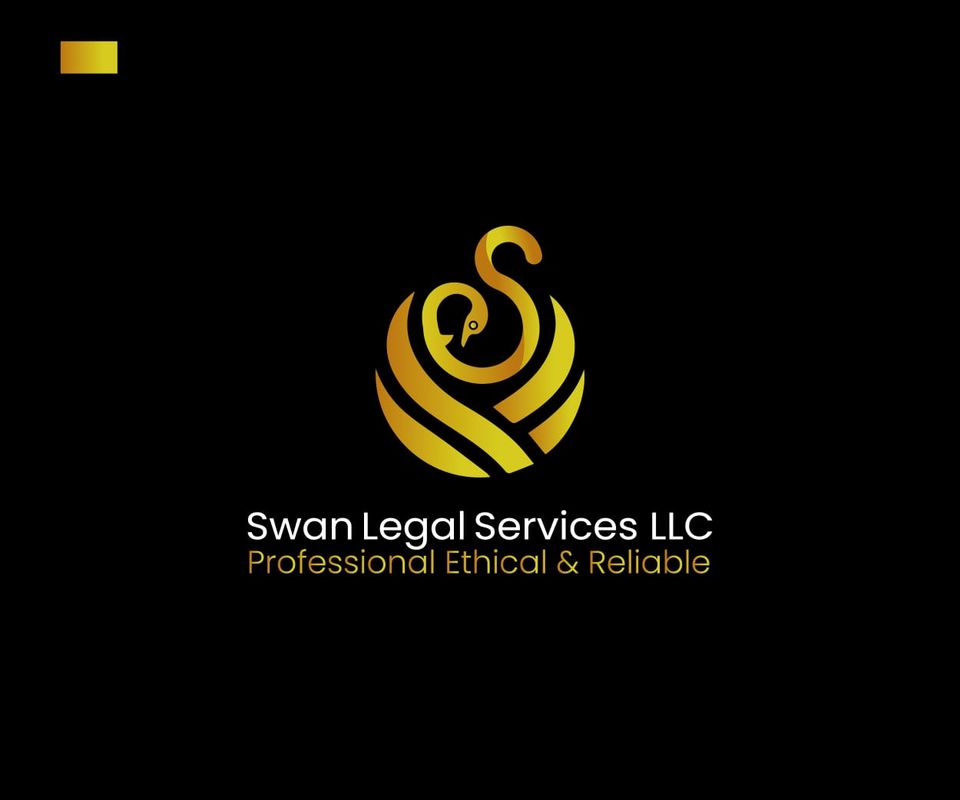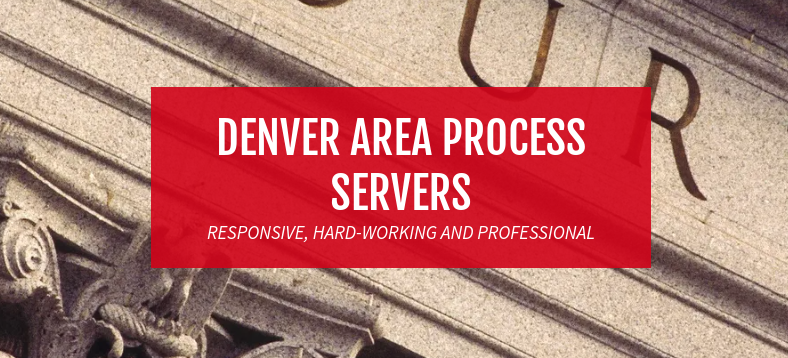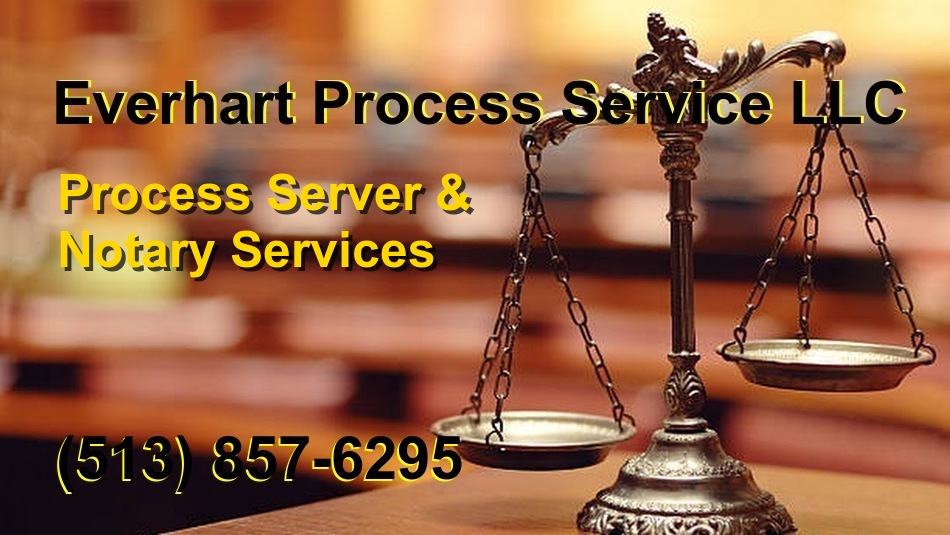 Eviction Process in South Carolina
Eviction Process in South Carolina
State-Specific COVID-19 Resources
The first step in the South Carolina Eviction Process is serving the tenant with a Proper South Carolina Eviction Notice. South Carolina has different notices for different reasons. If a landlord needs to evict a tenant for non-payment of rent, (most common reason) the landlord needs to serve (deliver) a 5 Day Eviction Notice. These eviction notices give the tenant an opportunity to cure the problem before the deadline, or else they will be sued for eviction.
It is important that the landlord checks their lease also. Some leases give the tenant more than the standard 5 or 14 days to cure the problem. If the lease does not address the notice period to end a tenancy then adhere to State Laws.
South Carolina Eviction Laws
The South Carolina Landlord Tenant Laws are contained under Title 27, Chapter 40 of the South Carolina Code, under what is commonly known as the South Carolina Residential Landlord & Tenant Act. The specific Eviction Laws are under another section under Title 27, Chapter 37 of the Code called Ejectment of Tenants. These statutes lay the foundation for the eviction laws, and individual courts may set their own rules that adhere to what is in this code. If you are a landlord in South Carolina, it is a good idea to read and become familiar with these landlord tenant laws.
 DOWNLOAD FORMS YOU WILL NEED FOR THE EVICTION IN SOUTH CAROLINA
DOWNLOAD FORMS YOU WILL NEED FOR THE EVICTION IN SOUTH CAROLINA
South Carolina Landlord Tenant Eviction / Unlawful Detainer Forms Package
 The South Carolina Rental Agreement
The South Carolina Rental Agreement
South Carolina Residential Landlord Tenant Rental Lease Forms and Agreements Package
3 Reasons to Evict
In South Carolina, a landlord may evict a tenant for 3 reasons:
- Non-Payment of Rent (Most Common Reason)
- Staying in the Property after the lease term has ended (called a holdover)
- Lease Violation (unauthorized pets, causing damage, criminal activity, etc.)
South Carolina Eviction Notice
The first step in the South Carolina Eviction Process is serving the tenant with a proper South Carolina Eviction Notice. South Carolina has different notices for different reasons. If a landlord needs to evict a tenant for non-payment of rent, the landlord needs to serve (deliver) a 5 Day Eviction Notice. If a landlord in South Carolina needs to evict a tenant for a lease violation, the landlord needs to serve a 14 Day Eviction Notice.
These eviction notices give the tenant an opportunity to cure the problem before the deadline, or else they will be sued for eviction. It is important that the landlord checks their lease also. Some leases give the tenant more than the standard 5 or 14 days to cure the problem.
If the landlord needs to evict a tenant simply because the lease term is up (or will be up), the landlord should look to the lease. If the lease does not address the notice period to end a tenancy (or if the tenancy is for an uncertain term), then the landlord needs to serve a 20 Day Notice to Terminate Tenancy.
If the tenant is on a month-to-month tenancy, the landlord should serve a 30 Day Notice to Terminate Tenancy.
If the tenant is on a week-to-week tenancy, the landlord should serve a 7 Day Notice to Terminate Tenancy.
Ejectment Action
What happens if the landlord has served the Eviction Notice, waited out the notice period, and the tenant is still there? The landlord needs to go to court for relief. The landlord should find the magistrate court for the jurisdiction where the property sits and tell them they need to file an Ejectment Action against their tenant. The clerks office at the magistrate court can tell the landlord which court is the correct one. The clerks office will give the landlord the proper forms to use. The landlord will fill out and file an Affidavit (sworn statement) and an Application of Ejectment. There will be a filing fee. Then the court will issue what is called an Order to Show Cause and have the Constable or Sheriff deliver it to the tenant along with the Affidavit and Application. It will give the tenant 10 days to settle the case with the landlord, or request a hearing to prove why they should not be evicted. If the tenant does neither, the landlord will win by default. If there will be a hearing, the court will set a court date.
Going to Court
If the court sets a hearing, the landlord must be present in order to win the ejectment action. If the tenant does not show up, the landlord will win by default. If both landlord and tenant are present, the court will hear the case. The landlord should bring all evidence and paperwork needed to prove the case, including the eviction notice, the lease, communication letters or emails with the tenant, pictures, witnesses, etc. The judge cannot rule for the landlord without evidence. If the judge rules for the landlord, the landlord should request a Writ of Ejectment immediately, or find out how soon the court can issue one.
Writ of Ejectment and “Set-Out”
The Writ of Ejectment authorizes the physical removal of the tenant. Once the Court issues it, the Constable or Sheriff will deliver it to the tenant within 5 days. Once delivered to the tenant, it will give the tenant 24 hours to vacate the property. If they do not, the Constable will contact the landlord for a time for physical removal, called “Set-Out.” At Set Out, the landlord must provide their own movers to remove the tenant’s property to the curb. The Sheriff or Constable is simply present to “keep the peace” during the process.
Your lease or rental agreement should spell out your landlord’s key rent rules, including:
- the amount of rent (there are no limits to how much a landlord can charge in South Carolina since there are no communities with rent control in the state)
- where rent is due (such as by mail to the landlord’s business address)
- when rent is due (including what happens if the rent due date falls on a weekend date or holiday)
- how rent should be paid (usually check, money order, cash, and/or credit card)
- the amount of notice landlords must provide to increase rent
- the amount of any extra fee if your rent check bounces, and
- the consequences of paying rent late, including late fees and termination of the tenancy.
State laws in South Carolina cover several of these rent-related issues the amount of notice a landlord must provide to increase rent under a month-to-month tenancy, and how much time a tenant has to pay rent or move before a landlord can file for eviction.
South Carolina Rules on Late Fees
Rent is legally due on the date specified in your lease or rental agreement (usually the first of the month). If you don’t pay rent when it is due, the landlord may begin charging you a late fee. South Carolina state law does not cover late rent fees. If your lease or rental agreement does not say anything about late fees, your landlord may not impose one, no matter how reasonable it is.
Amount of Notice South Carolina Landlords Must Give Tenants to Increase Rent
South Carolina does not have a state statute on the amount of notice the landlord must provide tenants in order to increase the rent or change other terms of a month-to-month rental agreement. Unless your rental agreement specifies otherwise, the landlord must typically provide the same amount of notice to change the rent or another term of the tenancy as state law requires the landlord to provide when ending the tenancy—in this case, 30 days. Keep in mind that if you have a long-term lease, the landlord may not increase the rent until the lease ends and a new tenancy begins—unless the lease itself provides for an increase.
Rent Increases as Retaliation or Discrimination
South Carolina landlords may not raise the rent in a discriminatory manner—for example, only for members of a certain race. Also, South Carolina landlords may not use a rent increase in retaliation against you for exercising a legal right—for example, in response to your legitimate complaint to a local housing agency about a broken heater.
South Carolina State Laws on Termination for Nonpayment of Rent
States set specific rules and procedures for ending a tenancy when a tenant has not paid the rent. South Carolina landlords must give tenants at least five days in which to pay the rent or move. If there is a written lease or rental agreement that specifies in bold, conspicuous type that landlord may file for eviction as soon as the tenant is five days late (or if there is a month-to-month tenancy following such an agreement), the landlord may do so without further notice to tenant. If there is no such written agreement, the landlord must give the tenants five days’ written notice before filing for eviction.
1. Generally
The relationship of landlord and tenant is always based upon a contract, whether oral or written, which determines the rights and responsibilities each party has and owes to the other.
Usually, the agreement between the parties takes the form of a lease, by which the tenant gains possession and use of the premises during the term of the lease, and in which the terms of the landlord-tenant relationship are spelled out.
Tenancies may be for a specific term of period of time (for a year), or for a periodic term and are automatically renewable (month to month), or tenancies may be at will (in which the lease stands so long as the parties desire it to or until such time as they wish to end it).
The lease usually provides for specific aspects of the landlord-tenant relationship such as subleasing, means of notice, termination, rent payments, and responsibility for repair and maintenance.
If the tenant fails to pay the rent, the landlord can terminate the lease, force the tenant to vacate the premises, and recover any rent due.
2. Jurisdiction of Magistrates
Magistrates have concurrent jurisdiction with the Circuit Court as to those landlord-tenant matters which may be brought pursuant to the provisions of Chapters 33 to 41 of Title 27 of the Code, regardless of the dollar-amount in controversy. § 22-3-10 (10). The magistrate court will retain jurisdiction in cases involving landlord/tenant and the possession of land even when any counterclaim exceeds the civil jurisdictional limit of $7,500.00. § 22-3-10 (12). In cases that do not fall under § 22-3-10 (12), the initial claim and counterclaim must be transferred to the Court of Common Pleas. § 22-3-30. In an ejectment proceeding brought pursuant to § 27-37-20, in the absence of a summons and complaint being filed, please be reminded that the remedy or relief is limited to ejectment (and does not include other claims or causes of action for damages, such as monetary damages, back rent, damage to the landlords’ property, etc.). Possession of property must be in dispute for the case to fall under § 22-3-10 (10) and (12). Mosseri v. Austin’s at the Beach, Inc., Op. No. 4215 (S.C. Ct. App. Filed March 12, 2007). If a summons and complaint is filed along with an action for ejectment, damages referenced above and pursuant to § 22-3-10 (10) and (12) may be pursued by a landlord.
As to any action brought in a magistrate’s court for past due rent not brought as an action for distraint or ejectment, such action must be brought pursuant to one of the jurisdictional grants of authority, other than that as to landlord-tenant matters, provided by S.C. Code Ann. § 22-3-10. As to such an action, the general $7,500.00 monetary limitation on a magistrate’s jurisdiction would apply.
As to any action brought in a magistrate’s court to recover sums due under an acceleration clause in a lease, such action must be brought pursuant to one of the jurisdictional grants of authority, other than as to landlord-tenant matters, provided by § 22-3-10. As to such an action, the general $7,500.00 monetary limitation on a magistrate’s jurisdiction would apply. See Op. Att’y Gen. dated January 14, 1982.
While all of the chapters related to landlord/tenant referenced above are important, special attention should be given Chapter 37, Ejectment of Tenants, Chapter 39, Rent, and Chapter 40, South Carolina Residential Landlord and Tenant Act (SCRLTA). When dealing with mobile homes or trailers, reference should be made to the Manufactured Home Park Tenancy Act found in Chapter 47 of Title 27 of the Code.
3. Eviction or Ejectment
a. Generally
A landlord may bring an action of ejectment against a tenant in these situations: (1) when the tenant fails or refuses to pay the rent when due, (2) when the term of tenancy or occupancy ends, or (3) when the terms or conditions of the lease are violated. (See § 27-37-10). Provisions in the SCRLTA provide the following additional grounds for a residential ejectment: noncompliance with the rental agreement, §27-40-710; failure to pay rent, §27-40-710; noncompliance affecting health and safety, §27-40-720; and absence, nonuse and abandonment, §27-40-730. Always consult the statute before acting. For specific grounds for ejectment under the Manufactured Home Park Tenancy Act, see §27-47-530.
Once an action for ejectment is begun for failure to pay rent, the landlord is under no obligation to accept past rent if offered by the tenant.
b. Commencing Ejectment
The procedure of ejectment commences upon the filing of an application for ejectment with any magistrate having territorial jurisdiction over the area in which the premises are located. (§ 27-37-20). The magistrate must determine whether a landlord-tenant relationship exists and what rent, if any, is due.
The magistrate should, upon making a determination that rent is due, issue a written rule requiring the tenant to vacate the premises or to show cause within ten days why he should not be ejected. (§ 27-37-20). The rule should be personally served on the tenant whenever possible. Special rules for service of process are set out in § 27-37-30. Section 27-37-30 authorizes service of the Rule to Show Cause by posting and mailing after two prior attempts to serve the rule have been unsuccessful, and provides specific procedures for service prior to posting and for mailing. Section 27-37-30, as amended, provides alternative methods of service of rules to show cause in ejectment proceedings.
Subsection (A), as amended, provides that service of the rule to show cause should initially be attempted “in the same manner as is provided by law for the service of the summons. . . .” Those methods are personal service, certified mail, and publication. See Rule 4, SCRCP.
Subsection (B) addresses an alternative procedure for service in abandonment situations and provides that “[w]hen no person can be found in possession of the premises, and the premises have remained abandoned, as defined in Section 27-40-730, for residential agreements and in Section 27-35-150 for non-residential rental agreements, for a period of fifteen days or more immediately before the date of service, the copy of the rule may be served by leaving it affixed to the most conspicuous part of the premises.” The ten days commences on the first day after the posting.
Subsection (C) provides an alternative procedure for service when service under subsection (A) has been unsuccessful after three attempts and abandonment is not an issue. The procedures set forth in (C)(1), (C)(2), and (C)(3) must be strictly followed before service is complete.(C)(1) requires that two attempts be made to personally serve the defendant, and each attempt must be “separated by a minimum of forty-eight hours and must occur at times of day separated by a minimum of eight hours.” For example: If the first attempt at service is made on Monday at 8:00 a.m., the second attempt could not be made earlier than Wednesday at 4:00 p.m. The person attempting to serve the rule must document the date and time of the attempts by affidavit or by certificate in the case of a law enforcement officer. On the first unsuccessful attempt to serve the rule, a copy of the rule must be affixed to the most conspicuous part of the premises. On the second unsuccessful attempt to serve the rule, the documentation of the two attempts to serve the rule must be attached to the copy of the rule when it is affixed to the most conspicuous part of the premises.
To complete service under this subsection, (C)(2) requires that a copy of the rule and the documentation of prior attempts at service be mailed by first-class mail to the defendant. The clerk must verify the contents and propriety of the mailing, and a fee as provided for in Section 8-21-1010(14) ($5.00) may be collected for this service. The clerk’s verification must be part of the record in the case, and service by first-class mail is not considered complete with- out the clerk’s verification. Finally, (C)(3) provides that the ten days for the tenant to answer and show cause does not begin until the eleventh day after mailing. However, if the tenant contacts the magistrates court prior to the eleventh day, the specified time period for the tenant to show cause as provided in Section 27-37-20 must begin to run at the time of contact.
c. Accrual of Rent
Even after service of process, rent continues to accrue so long as the tenant remains in possession, and the tenant is liable for the continually accruing rent. Even if the landlord accepts rent offered after service of process, the landlord may still insist and have ejectment of the tenant since the rights of the parties at the time of issuance of the rule are controlling. (§ 27-37-150).
d. Failure of Tenant to Appear
If the tenant neither vacates the premises nor appears within the time demanded by the rule to show cause (within ten days) the magistrate may then issue a written warrant of ejectment. Section 27-37-40. A judgment in an ejectment action does not authorize an officer to use physical force to remove the property and person in possession of the disputed premises. A magistrate in his discretion, however, may after adjudication of the rights of the parties issue a Writ of Possession which would authorize a proper officer to use such force as is necessary to put the plaintiff in possession of the premises and remove all other parties in possession.
The magistrate’s constable or sheriff of the county may then proceed to the premises, and present to the occupant(s) of the premises a copy of the writ and give the occupants twenty-fours to vacate voluntarily. If the occupants refuse to vacate within the twenty-four hours or the premises appear unoccupied, the constable or deputy sheriff shall announce his identity and purpose. If necessary, the deputy sheriff, but not a constable, may enter the premises by force, using the least destructive means possible, and remove the tenants and all property not otherwise belonging on the premises. The property should be deposited on the roadside. §27-40-710(D).
In executing the writ, if the premises appear to be occupied and the occupant does not respond, the constable and deputy sheriff shall leave a copy of the writ taped or stapled at each corner and attached at the top of either the front or back door or in the most conspicuous place. Twenty-four hours following the posting of the writ, if the occupants have not vacated the premises voluntarily, the deputy sheriff, but not a constable, may then enter the premises by force, using the least destructive means possible, and remove the tenants and all property not otherwise belonging on the premises. The property should be deposited on the roadside. §27-40-710(D). Discretion may be exercised by the constable or deputy sheriff in granting a delay in the dispossession of ill or elderly tenants.
“In carrying out the execution of the Writ, where a forcible entry or removal must be made, we strongly advise that the constable should seek the assistance of regular deputies of the county in carrying out the mandate of the Writ. Constables and deputies should be confident of the appropriateness of the prior procedures and conservative in the execution of the Writ.
“Since the uninvited entry of a tenant’s premises by law enforcement officers is a situation potentially troublesome, good sense and caution should always be exercised. Adequate announcement of one’s presence, identity, and purpose should precede any entry. If the entry is accomplished by force or breaking, it should always be by the least destructive means possible. Good sense and fairness should always be the rule. When confronted with a situation when called upon to dispossess tenants who might be ill or elderly, discretion would dictate that some delay in executing the warrant might be appropriate.
“All law enforcement officers should be cognizant of the potential ramifications and legal liabilities which could result from improper procedures or from the use of excessive or unreasonable force. In any event, the law only authorizes such force as is necessary to carry out the mandate of the Writ.” (§ 27-37-40; Op. Att’y Gen. No. 79-7 dated 1979).
e. Trial for Ejectment
If the tenant appears to show cause, the magistrate should hold a trial as in the same manner as any other civil action, allowing a trial by jury if demanded by either party. (§§ 27-37-60, 27-37-80). Once the case is docketed, either party may request a jury trial. However, the jury trial request must be made in writing and delivered to the court no later than five (5) working days prior to the original bench trial date. Rule 13(c), SCRMC; see also Bowers v. Thomas, 373 S.C. 240, 644 S.E.2d 751 (2007) (stating that the bench trial date is what triggers the five (5) working days period for requesting a jury trial.) When setting the original bench trial, notions of due process would suggest that the trial should be scheduled with at least five (5) working days in order for either party to request a jury trial. S.C. Const. art. I, §14 (“The right of trial by jury shall be preserved inviolate.”) If a jury trial is requested by the tenant in a residential eviction, please see §27-40-790 concerning payment of rent pending trial. If a jury trial is requested by the tenant in a commercial eviction, please see §27-37-155, concerning payment of rent pending trial.
Upon a verdict for the landlord, the magistrate should issue a writ of ejectment and possession within five days, and the tenant should be ejected by the constable or sheriff. (§ 27-37-100). The constable or deputy sheriff should give the occupants 24 hours to vacate voluntarily. If the occupants refuse to vacate within 24 hours or the premises appear unoccupied, the constable or deputy sheriff shall announce his identity and purpose. If necessary, the deputy sheriff, but not a constable, may then enter the premises by force, using the least destructive means possible, in order to effectuate the ejectment. (§ 27-37-160). Again, any property may be deposited on the nearest roadside. §27-40-710(D).
When evicting tenants under the Manufactured Home Park Tenancy Act, refer to §27-47-530 for specific time requirements which are not applicable to a typical residential eviction.
If the verdict is in the tenant’s favor, he may remain in possession of the property until the termination of his tenancy according to the agreement or by law, or until he fails to pay rent or is ejected upon another proceeding. (§ 27-37-110).
f. Appeal of the Verdict
Either party may appeal the decision (§ 27-37-120) but if the tenant does so, he must post an appeal bond, the amount of which is determined by the magistrate. The tenant must post this bond within five days after the service of the notice of appeal or the appeal should be dismissed by the magistrate. (§ 27-37-130). In an appeal from a residential ejectment, please see §27-40-800 concerning posting a bond, signing an undertaking and paying rent pending the outcome of the appeal. A tenant who is wrongfully dispossessed may bring an action for damages against the landlord. (§ 27-37-140). However, if the tenant is dispossessed as a result of an unreversed judgment in an ejectment action, he will be estopped from claiming damages, except for the use of excessive force.
4. Collection of Rent by Distraint
Distraint or distress, is the remedy provided for in § 27-39-210 et seq., by which the landlord may request the magistrate to have a sheriff or constable upon the premises of the tenant and seize certain property found there, to be held until such time as the rent is paid. Certain property is specifically exempt from that which may be seized for the purposes of distress – personal clothing and food within the dwelling, bedsteads, and bedding and cooking utensils. (§ 27-39-230). If the rent remains unpaid, the distrained property may be sold, as described below, and the proceeds applied toward satisfaction of the rent due.
a. Commencement of Distraint Proceeding
A landlord may enforce collection of rent by making an affidavit before the magistrate having territorial jurisdiction over the area in which the premises occupied are located. The affidavit should set forth the amount of rent due. In addition, a notice directed to the tenant stating the alleged amount of rent due plus costs and setting the time and place for the holding of a pre-distress hearing should be prepared. The hearing may not be held less than five days after the service of the notice. (§ 27-39-210).
b. Service of Process
The notice and affidavit should be delivered to the magistrate’s constable or a sheriff for service upon the tenant. They should be personally delivered to the tenant or if he is unable to be found, to any agent of the tenant in whose possession the property sought to be distrained is located. Other rules of service of papers upon tenants not able to be located are found in § 27-39-210.
c. Pre-Distress Hearing
If the magistrate, after conducting the hearing, determines that the landlord’s right to distress is valid and the tenant has no overriding right to continue in possession of the property subject to distress, then the magistrate may issue his distress warrant naming the amount of rent due, with costs. (§ 27-39-220). The warrant should be delivered in the same manner and according to the rules as applicable to service of the affidavit and notice.
d. Enforcement of Distress WarrantThe officer charged with the responsibility of service of the distress warrant should immediately seek out and demand payment of the rent, plus costs, from the tenant or occupants of the premises. (§ 27-39-240).
If the tenant pays the amount demanded, the officer should make a return to the magistrate of the amount collected, whether in partial or total satisfaction of the judgment. The magistrate should then make the disbursement to the landlord.
Upon the refusal of the tenant or occupant to pay the amount of rent determined by the judgment and shown on the distraint warrant, the officer should return to the magistrate to report the tenant’s refusal to make payment. A distress warrant does not authorize forcible entry. In this situation, the landlord-plaintiff must begin an action in claim and delivery (if not begun previously at the time of the filing of the distraint affidavit). Op. Att’y Gen., No. 79-7; citing State v. Christensen, 194 S.C. 131, 9 S.E.2d 555 (1940); Burnett v. Boukedes, 240 S.C. 144, 125 S.E.2d 10 (1962).
The affidavit in claim and delivery must specifically describe the property found on the premises that is to be seized. The value of the seized property should be equal to the amount (or unpaid balance) of the judgment. (§ 22-3-1320). If the magistrate determines that a claim and delivery is proper, the normal jurisdictional limits, procedures, and time requirements as prescribed in the Claim and Delivery section of this Bench Book should be followed.
If the claim and delivery procedure is not initiated until the issuance of the distraint writ and refusal of the tenant to pay or surrender property, the normal claim and delivery procedures should again be followed, with respect given to all time restraints.
e. As to Property Distrained
The amount of property distrained must be reasonable in respect to the amount of distress (§ 27-39-240), and landlords are liable for damages for unreasonable distress. (§ 27-39-300). Property of the tenant should be first seized for the purpose of satisfaction of the rent demands, except for certain exempt property (§ 27-39-230), but property belonging to persons other than the tenant which is upon the premises may be distrained if the tenant’s property is insufficient to satisfy the rent demands. (§ 27-39-250). However, this rule does not apply where there is a publicly recorded security interest which gives the landlord notice of exactly what property on the premises is unavailable to distrain. A prior perfected security interest has priority over a landlord’s lien. Ex Parte J. M. Smith Corporation, 341 SC 442, 535 S.E.2d 131 (SC 2000).
Any property belonging to the tenant which was removed from the premises, is subject to distraint if found, provided such distraint is made within thirty days after removal from the premises. (§ 27-39-270).
f. Tenant May Give Bond
Within five days after distraint, the tenant may free the property distrained by giving a bond payable to the landlord in double the amount claimed in the distress warrant, with sufficient surety approved by the court. (§ 27-39-310).
g. Sale of Distrained Property
If the tenant fails to give bond within five days, then the officer may sell the property at a public auction to the highest bidder for cash. Notice of the time and place of sale must be posted upon the premises and two other public places for at least five days prior to the sale. (§ 27-39-320).
The landlord or any other person may become a purchaser at such sale (§ 27-39-340), but the purchaser of such property takes it subject to any lien for taxes existing against the property. (§ 27-39-330).
If the property distrained brings more than the rent with costs at the sale, the surplus should be paid over to the tenant, and the rent paid to the landlord. (§ 27-39-350).
5. Non-Landlord/Tenant Problems: Summary Ejectment of Trespassers
Section 15-67-610 may be used to remove a person from the premises when there is no landlord/tenant relationship. Examples of when section 15-67-610 could be used would include the following: 1) an ex-lover who will not leave the premises; 2) an adult son or daughter who refuses to leave the parent’s home; 3) a girlfriend who owns house and wants to evict boyfriend.
When this code section is used to evict a trespasser, the magistrate does not use an application for ejectment. A Notice to Quit the Premises must be served on the trespasser. Personal service on the defendant is required. If, after the expiration of five (5) days from the personal service of such notice, the trespasser does not leave the premises, then the magistrate shall issue a warrant of ejectment to any sheriff or constable to eject the trespasser “using such force as may be necessary.”
For names of lawyers in your area who are experienced in housing issues,
Find Law Firms on our Directory.
Find The Eviction Process in other States
Nationalevictions.com is for people who are renting or seeking to rent housing. Our site is for Eviction Information Purposes only, Not Intended to replace your Attorney or any Legal Advice. The reader should always remember your legal responsibilities. After all, you may unknowingly jeopardize your rights by not fulfilling your legal rights as a Tenant or Landlord.
Many of the Chapters and Articles are interrelated. This not intended to be an all-inclusive overview, or the best advice in every situation. Please Consult a Lawyer for your Rights and Protection as to the laws of your State. This information is not meant to be a substitute for the advice of an Attorney.












